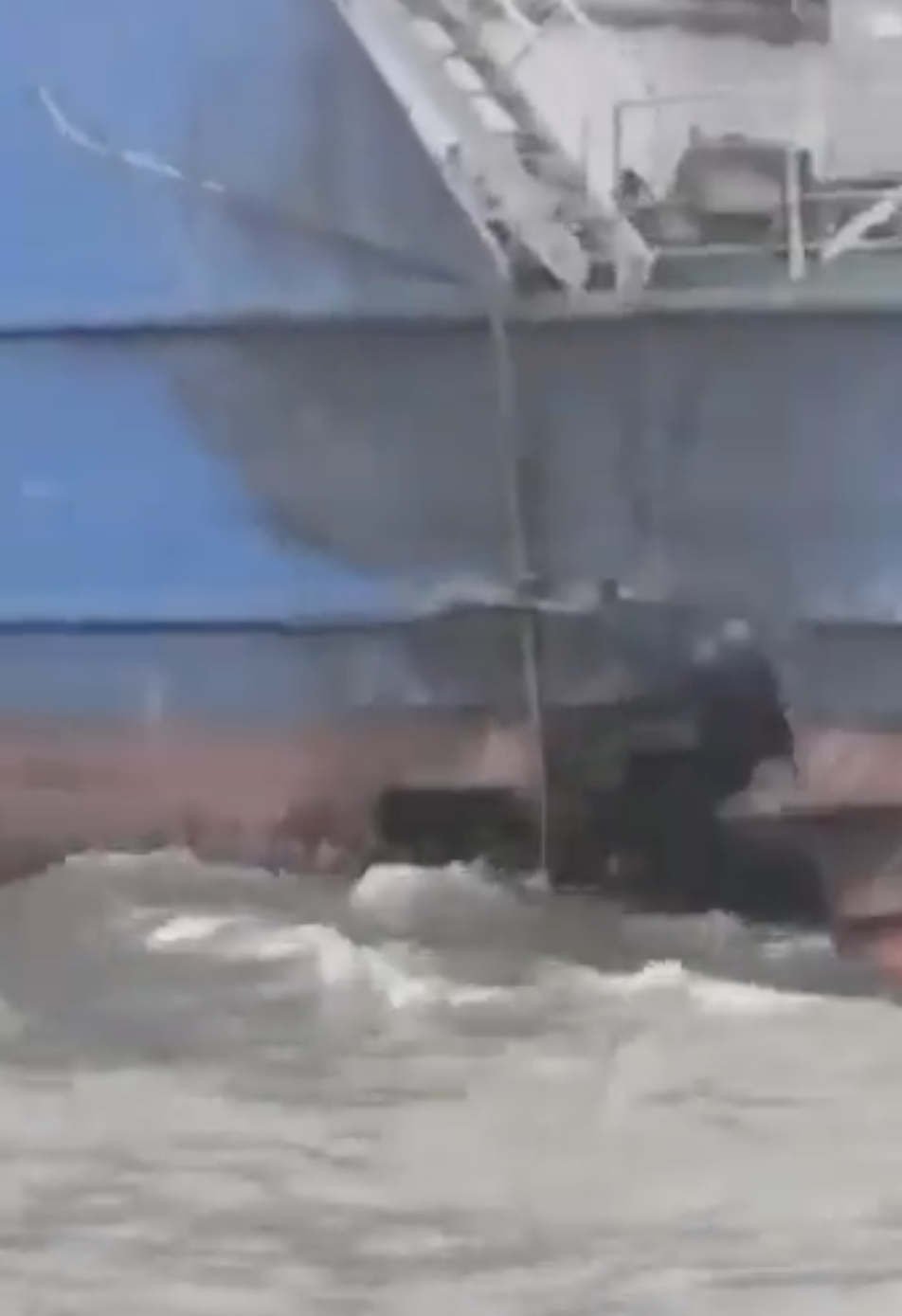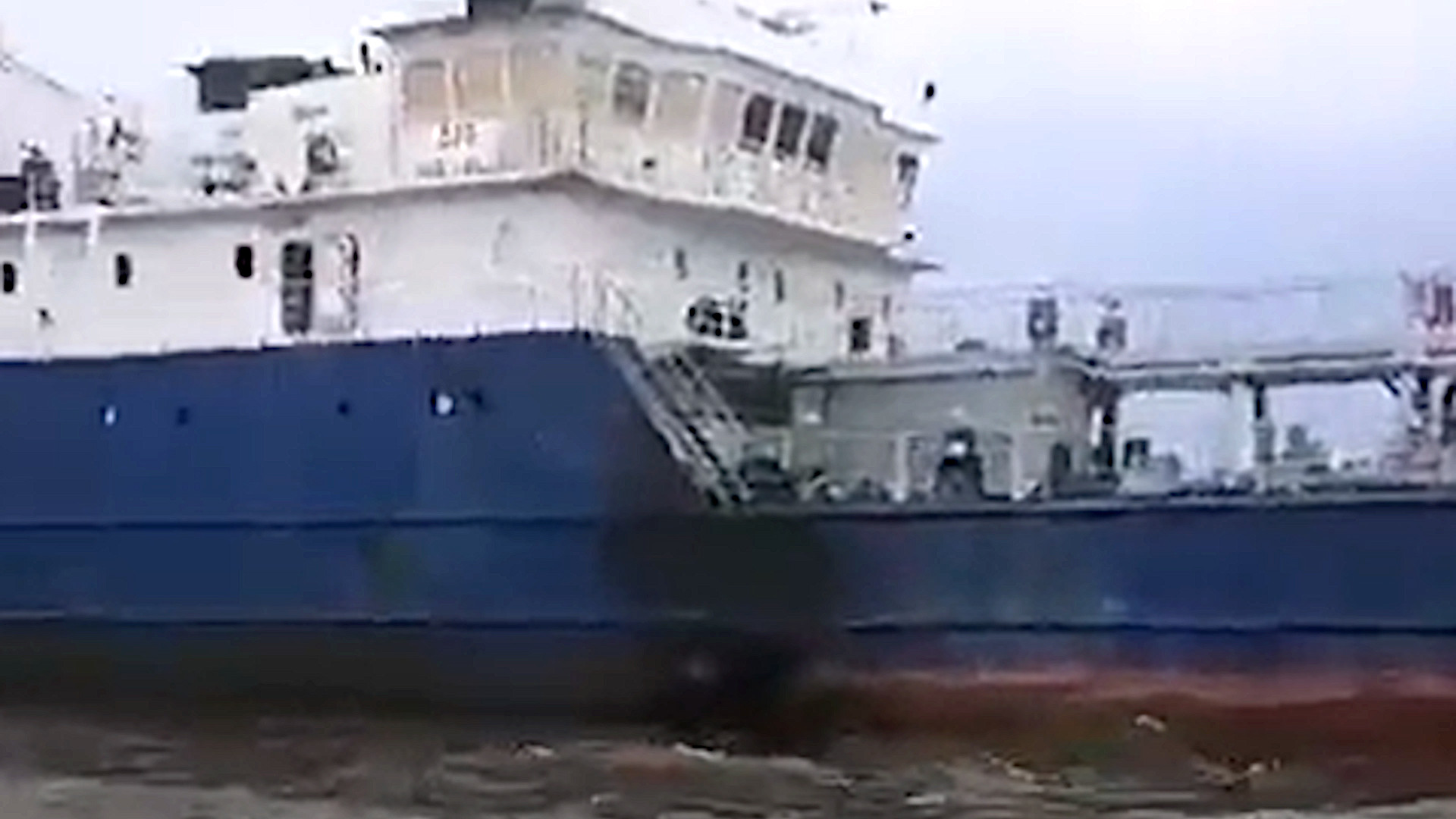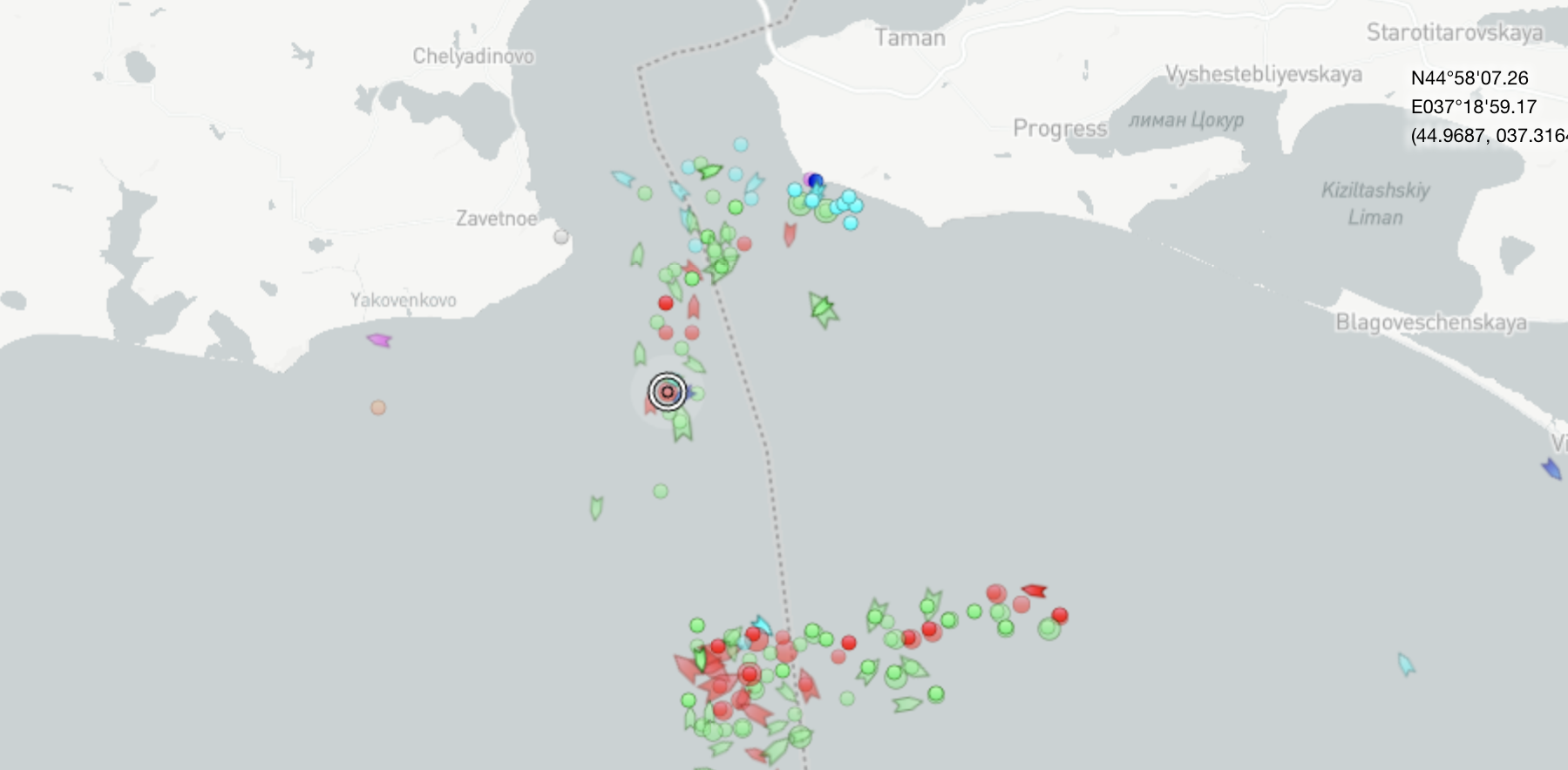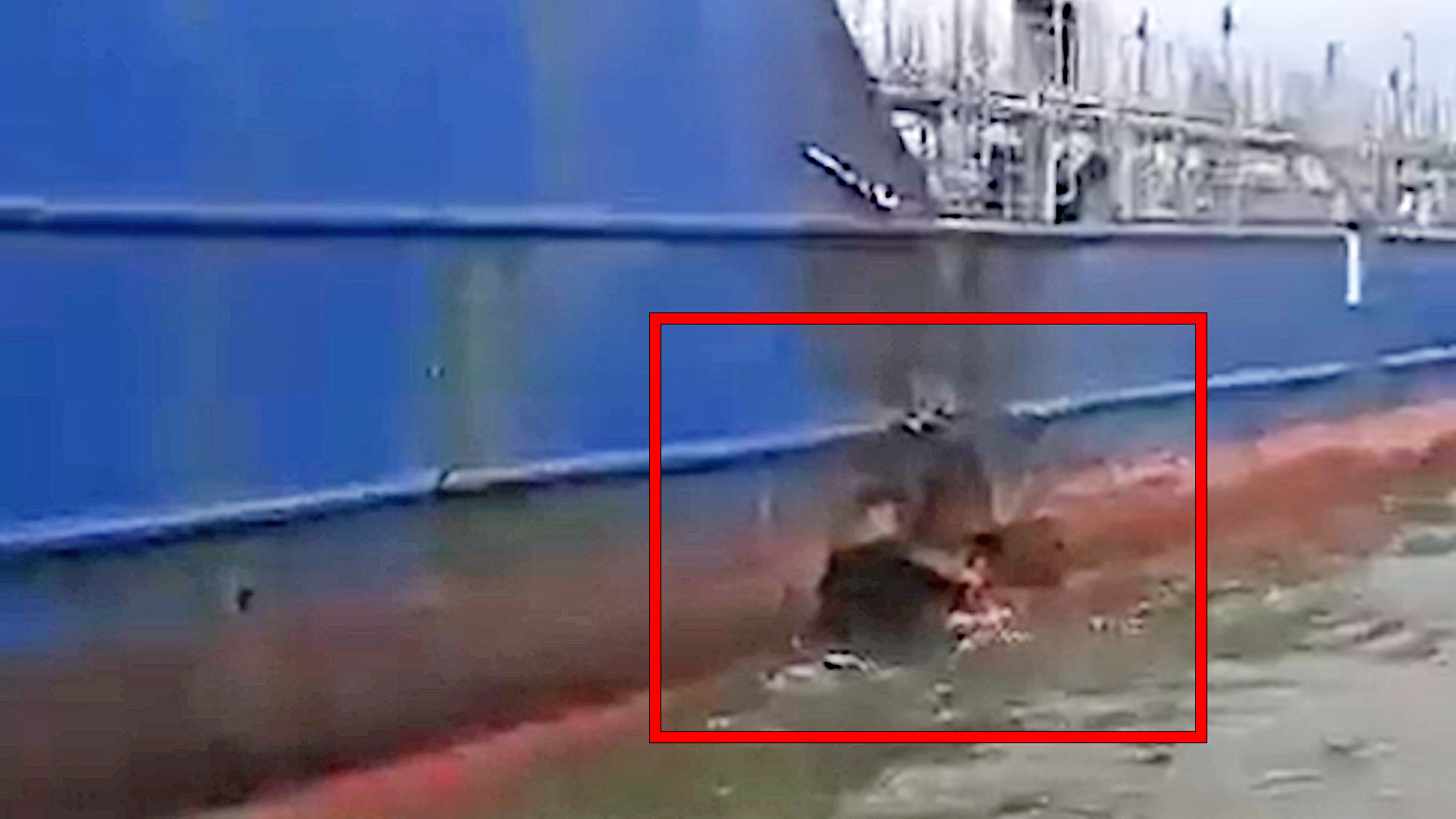A video has emerged showing the aftermath of the drone attack on the Sig, a Russian tanker ship, which took place on August 4, close to the Kerch Bridge. The attack took reportedly took place some 17 miles south of the bridge, near the mouth of the Kerch Strait, damaging the vessel and causing minor injuries to some of the 11 crew. There has been a spate of Ukrainian aerial drone and uncrewed surface vessel (USV) attacks in the area recently and you can read more about what was already known about this incident in The War Zone‘s previous reporting.
The full footage in question, seen in the Tweet above, which is around a minute long and was shot in daylight, begins by showing the starboard side of the stern of Sig and then moves along the hull. A tug is seen positioned at each end of the ship, suggesting the tanker might be in the process of being moved or at least secured. This tallies with an earlier TASS report, citing the regional Marine Rescue Coordination Center, which stated that two tugs arrived at the scene of the attack.

In the clip, a large, ragged hole as well as what look to be scorch marks, are visible along a section of the starboard side of the hull just above the waterline toward the stern and immediately ahead of the ship’s superstructure. Again, this aligns with official Russian statements, including one from the Russian maritime transport agency, RosMorRechFlot, which said the vessel had a hole “in the area of [the] engine room near the waterline from the starboard side, presumably as a result of an attack by a sea drone.”


A previous video, included in the Tweet below, of the attack from the drone boat’s perspective shows it aiming for the same general spot along the Sig’s hull.
Previously, Vladimir Rogov, a Russian-installed official in Ukraine’s southeastern Zaporizhzhia region, claimed on his Telegram channel that the resulting explosion left “several members of the tanker’s crew slashed by glass,” while adding that there were no deaths as a result of the attack. This cannot be independently verified at this point.
Another report from the Kremlin-connected Rybar Telegram channel claimed that the tanker’s engine room was flooded.
This claim was followed by photos from inside the vessel, showing what appeared to be significant damage, including waist-deep black, oily water in the engine room. Topside, the windows on the bridge were shattered and the pilothouse buckled from the shockwave from hundreds of pounds of explosives detonating after the boat contacted the hull. Citing Ukrainian intelligence sources, a report from Reuters claimed that the USV’s warhead weighed 450 kilograms, or a little under 1,000 pounds.
The exact location of Sig currently is unclear. According to information available from the website MarineTraffic, an aggregator that provides real-time information on ship movements, the Sig was still in the approximate area of the attack as of the evening of August 8, the latest date for which information is available.

There are reports that the Sig has been sanctioned for supplying jet fuel to Syria, likely in support of the Russian military aviation presence there. At the time of the latest attack, the vessel was again transporting fuel for the Russian military, a Ukrainian intelligence source told Reuters. This could imply that the tanker was seen by Ukraine as a legitimate military target.
Russian maritime traffic around the Kerch Bridge has been subject to several drone attacks in recent weeks, as explosives-laden USVs have become an increasingly popular Ukrainian tactic in the complex campaign fought in and around the Black Sea.
The Russian Navy Ropucha class vessel Olenegorsky Gornyak, an amphibious landing ship, also appears to have been badly damaged as the result of a Ukrainian drone attack that took place on August 4, the same day that the Sig was attacked.
The Kerch Bridge has already been successfully attacked twice, too, most recently on July 17 by Ukrainian USVs.
In the past, a number of Ukrainian drone attacks against Russian warships have reportedly been foiled after the ships and supporting helicopters managed to engage the boats in massed small arms and cannon fire once within visual range. Still, Ukraine has continued to invest heavily in these weapons, rapidly evolving their capabilities. At the same time, a commercial vessel like the Sig presents a much easier target, not normally having organic defenses against these kinds of threats.
In addition, while the precise extent of the damage to either ship is unknown, what has been seen of the Sig and the Olenegorsky Gornyak provides new evidence that Ukrainian USVs present very real threats. The Ukrainians have been continuing to expand the size and scope of their drone boat arsenal, including new models, too.
Whatever the case, as well as the prized Kerch Bridge, Black Sea Fleet port facilities, and individual ships, like the Sig, are very much now in Ukrainian sights as they seek to hit back against Russian maritime and logistics assets.
Contact the author: thomas@thedrive.com
